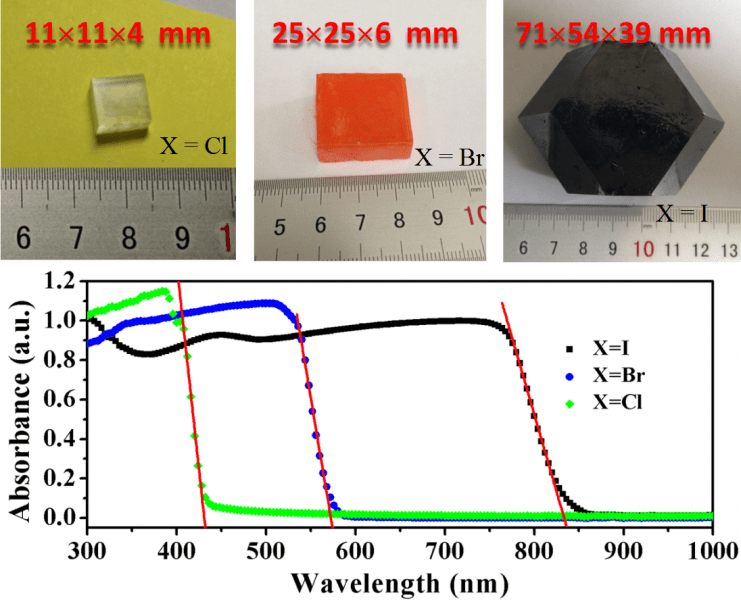Crystallinity draws the drastic difference between diamonds and amorphous carbon. The same holds true in many other cases – if it were not for large single crystalline materials, applications including modern electronics, solar cells, solid state lasers, and light-emitting diodes would all have been impossible. A typical example is single crystalline silicon, which has modernized our everyday life by revolutionizing key industries including electronics, communications, and energy.
The organolead halide hybrid perovskites have emerged as a promising candidate for photovoltaic and general optoelectronic applications because of their superior characteristics such as high absorption coefficient, direct band gap, long carrier lifetime, and high balanced hole and electron mobility. However, until now, all perovskite solar cells are based on microcrystalline and amorphous components, due to the lack of large single crystalline materials.

This constraint has inspired Liu and colleagues at Shaanxi Normal University and Dalian Institute of Chemical Physics (both in China) to Two-inch-sized Perovskite CH3NH3PbX3 (X=Cl, Br, I) Crystals: Growth and Characterization. As the first time that ever perovskite crystals of this type are grown into dimensions exceeding half an inch, it enables direct comparison with their microcrystalline counterparts. It turns out that these jumbo crystals show better thermostability and optical absorption, lower trap density, lower hole concentration, as well as higher carrier mobility, most likely as a result of reducing grains, boundaries, voids, and surface defects.
The trap density in the single crystalline perovskite has recently been found to be very low, similar to single crystalline Si, but 5 orders of magnitude lower than that in microcrystalline perovskites, leading to super large charge carrier life time. In fact, it is the longest among common direct bandgap semiconductors, even longer than popular inorganic optoelectronic materials including GaAs, CdTe, among others. More importantly, the light absorption onset further shifts into the infrared region, greatly boosting the theoretic current density for the crystalline perovskite. Therefore, solar cells made of single crystalline perovskites are expected to yield significantly higher power conversion efficiency as they feature not only better carrier generation and transport efficiencies, but also broader light absorption spectra. Besides, the stability of single crystalline perovskites should be much better than the microcrystalline ones.
As large single crystalline materials form the basis for semiconductor, electronics and optoelectronic industries, this technique will bring high quality perovskite crystals into market at lower costs. While such materials can certainly improve the performance of current products, they will allow exploration and development that are previous hampered by small microcrystalline materials.














